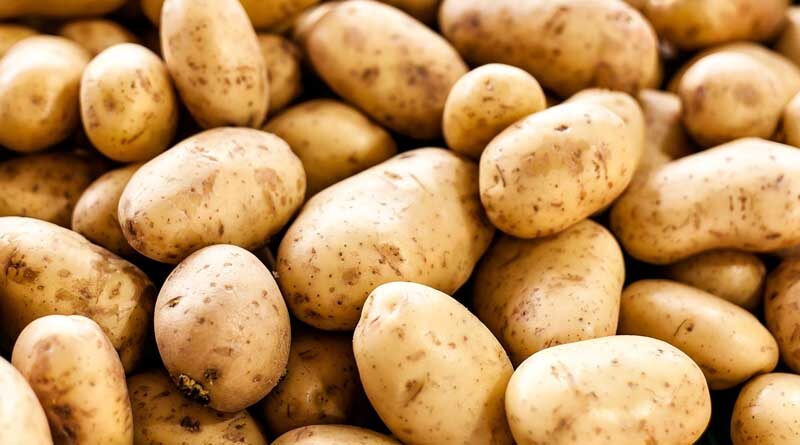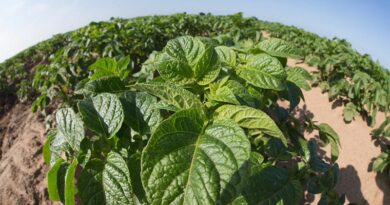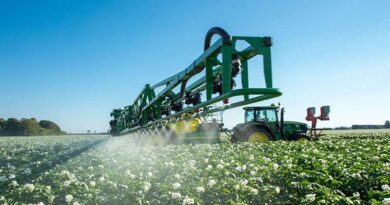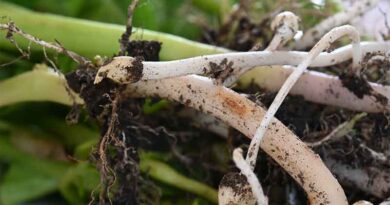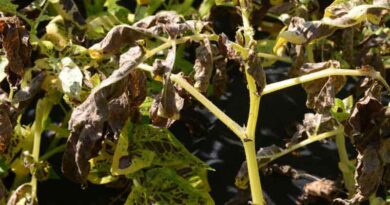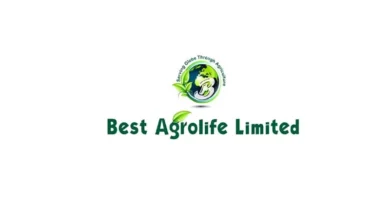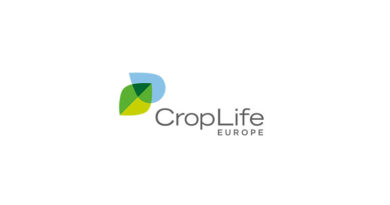Potato science sees solution to heat stress
20 April 2022, UK: New research is revealing the science behind biostimulants that can trigger the plant’s own natural processes and enable it to better cope with abiotic stress factors, reports Syngenta Potato Technical Manager, Andy Cunningham.
“Biostimulants have an important role to play when mitigating abiotic stresses as a result of environmental factors, such as whether it’s too hot or too cold, or the effects of drought or waterlogging.
“Importantly we now recognise that it’s not just extremes of weather that cause problems, but any sub-optimal conditions that will have an impact on the crop’s performance.”
Andy pointed out that certain stages during the plant’s growth cycle can make it more susceptible to stress effects reducing crop quality, where biostimulants can help the plant processes during that stage.
Also Read: India targets 3,280 lakh tonnes food grain production in 2022-23
With the effects of a changing climate impacting on crop efficiency, the role of biostimulants is becoming ever more pertinent for potato production. “We are unarguably seeing the effects, and it’s not changing for the better for the potato plant in particular.
“Summers are going to get warmer, and it’s predicted that we are going to experience more frequent and more intense heat related events.”
“Heatwaves, such as we experienced in 2018, are now 30 times more likely to occur as a result of climate change,” he warned. “Heat is going to be an increasing abiotic stress that crops are going to have to deal with.”
Modern potato varieties are adapted to grow optimally at between 14⁰C and 22⁰C. Under those conditions they most efficiently photosynthesise light and CO2, to create sucrose that is translocated down to the tubers and converted into carbohydrate that gives yield.
“However, when a plant is exposed to too much light, and therefore heat, it goes into overdrive and cannot cope, which can result in damaging stress. It does have a natural defence mechanism, whereby it will regulate plant protective responses to protect its most vulnerable apparatus, the essential photosystem2 in chloroplasts – but at a cost to photosynthetic activity,” he said.
Potato plants do this by non-photochemical quenching (NPQ), or the release of the excess energy as heat, rather than photosynthesis. It struggles to do both at the same time, so in effect it shuts down from photosynthesis and the production of sucrose that it needs to create tuber yield. The more NPQ, the less photosynthesis.
At the same time, the plant closes its stomata to prevent water loss, but that means there is less CO2 entering the leaf that also prevents photosynthesis going on.
Excessive heat will also lead to oxidative stress, when the overactive cells produce ever more reactive oxygen species (ROS) that exceeds the plants’ natural defences. These ROS snatch electrons from organic molecules and disturb the cell’s normal function.
“At best, the plants’ response is to shut down and stop photosynthesis. At worst it can lead to cell damage that may be unrecoverable and have more profound long-term effects, even when the stress has passed,” advised Andy.
The timing of a Quantis biostimulant application prior to the stress period will provide an uplift in essential anti-oxidants to better cope with the excess production of ROS, he pointed out. Also, the high proportion of potassium acts as an osmoprotectant to maintain water in cells, including more turgid stomata to keep them open for CO2 fixation and transpiration.
“Both these functions help to maintain healthy cell function, to optimise photosynthesis in cells, so more energy is used in photosynthesis and more carbohydrate can be stored away in tubers.”
“Where and when that heat stress and damage occurs in the crops’ life cycle will implicate the effects we see in the field in terms of yield.”
Research has shown optimal temperatures for maximum plant performance vary through the growing season. While the maximum temperature for optimal leaf photosynthesis is indicated at 24⁰C, at the time of tuber initiation temperatures above 22⁰C start to impact on plant performance, while at tuber bulking studies show plants perform sub- optimally when temperatures exceed as low as 14⁰C.
Temperatures above which potatoes perform sub-optimally at growth stages through the season:
| Leaf photosynthesis | 24⁰C |
| Tuber initiation | 22⁰C |
| Onset of tuber growth | 15⁰C |
| Tuber bulking | 14 – 22⁰C |
| Tuber yield | 20 – 24⁰C |
“With temperatures over 25⁰C, the plants will begin to struggle,” he advised. Syngenta research at the University of Nottingham demonstrated how potato plants treated with Quantis were better able to reduce the effects of heat stress and maintain all important photosynthetic activity.
The detailed scientific research showed that in glasshouse trials, to best simulate field conditions at 30⁰C, Quantis treated plants utilised over 30% more CO2 uptake and 45% greater transpiration rates – indicated by water conductance – 24 hours after application.
“These results showed that the stomata were open and the plant is actively photosynthesising, compared to the untreated,” Andy reported.
Quantifiable assessment of non-photochemical quenching also revealed that seven days after application and following six days of heat stress, Quantis treated plants were showing 10% less NPQ – an indication that the leaves were releasing less wasteful heat and thereby utilising more of the sunlight energy for photosynthesis.
Measuring quantum yield at the same time, showed significantly greater leaf fluorescence from the Quantis treated plants, which is a direct correlation of the light photons used and the level of photosynthesis, he added.
While all this was going on at a physiological level in the leaf, the University of Nottingham research had also shown the Quantis effects at a hormonal level. Gibberellic acid that promotes stem and stolon elongation during growth stages is also known to inhibit tuber formation, along with cytokinin that inhibits cell elongation but promotes tuber formation.
“The study showed that untreated heat stressed plants went into survival mode, to divert energy assimilates to the shoots and leaves. While the Quantis treated plants maintained normal function with significantly higher levels of trans-zeatin cytokinin, along with measurably lower levels of gibberellic acid.”
When the researchers took the plants to yield, the Quantis treatment produced a significant increase in tuber weight, along with a higher proportion of larger grade tubers.

